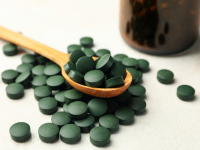Resources
Search >>
Search >>
In this on-demand webinar Doug Marshall and John Scanga explain the latest regulatory challenges in food safety and quality from the FDA and USDA with a focus on the new rules and regulations. Original airdate August 7, 2024.
A research team from the University of Wisconsin-River Falls was conducting ambitious genetic association studies with the ultimate goal of transferring a disease-resistant gene between rose cultivations. But they had one problem: how would they complete the challenging genetic analysis?
Keywords:
BDI
Choosing a reputable hemp testing lab can be difficult and time-consuming. We have put together a checklist of information your hemp company should consider when vetting and selecting a hemp testing partner.
In an industry rooted in nature but constantly evolving with science, botanical supplements are experiencing a quiet revolution. Innovation isn't just about discovering exotic new plants—it's about precision, purpose, and progress at every step of product development. Check out our infographic on your botanical product's steps, from seed to shelf.
A client requested testing for the cGMP-compliant analysis of cattle feed medicated with monensin. Watch our case study video below to learn how Eurofins Animal Health Testing evaluated and validated AOAC Official Method 2006.01 Monensin, Narasin, and Salinomycin in Mineral Premixes, Supplements, and Animal Feeds.
Read this article from the Wisconsin State Journal about how Eurofins Food Chemistry Testing Madison is helping to reduce the infant formula shortage.
Keywords:
News
August 5, 2022, Eurofins Craft Technologies’ newly validated phenolic method will initially offer 16 analytes and will continue to expand based on market demands. The new offering covers the following hydroxybenzoic, cinnamic, and hydroxycinnamic acids. Read the full press release to learn more.
Are you stuck on the proverbial micro testing loop? Do you submit a sample to the lab, get a non-compliant result, fill out some paperwork, visit a field and then just start right back over at step one? If so watch this webinar on how to fix those issues.
This poster demonstrates how DNA sequencing can be an important tool in quality control, presumptive confirmations, and environmental monitoring.
Learn about frequent causes of off-flavor, off-odor, and flavor scalping in packaged foods, beverages, and pet food products, including analytical techniques ranging from GCMS to ICP to LCMSMS for troubleshooting and detection, with a focus on SPME-GC-MS analysis. Learn how improper product packaging, production, or transportation issues can cause your product to be recalled. Factors that can negatively impact flavor and aroma. The analytical techniques range from GCMS to ICP to LCMSMS for troubleshooting and detection.
















